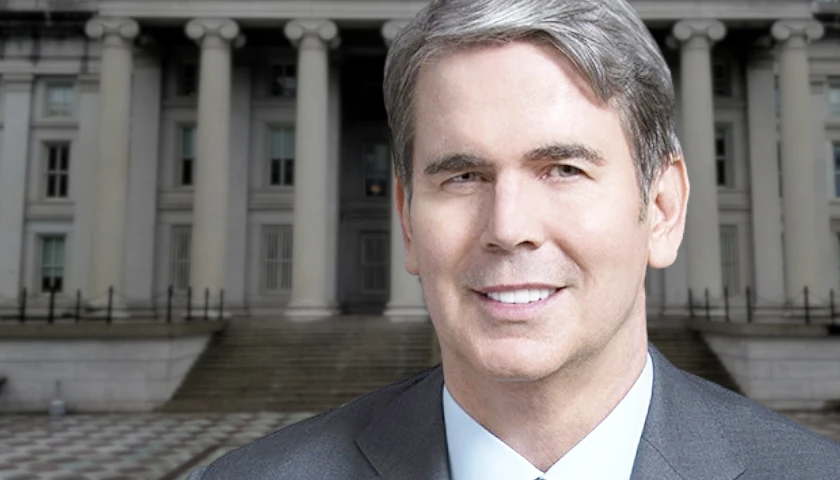by Michael Benz
In the cartoon below, you will see the Department of Homeland Security (DHS) encourage a young female protagonist to report her “Uncle Steve” to Facebook for posting “disinformation”.
DHS’s rationale? “Uncle Steve” posted that “Covid-19 is no worse than the flu”:
Just to put a point on it, this screenshot is the climax of a six-minute children’s cartoon produced by the Department of Homeland Security — which was established, in part, to stop another 9/11:

Products like these (and DHS has an entire line of them) are a far cry from the primary means by which DHS coordinates online censorship at scale. As introduced in Part 1, DHS chiefly spearheads censorship through its partnerships with tech companies, civil society groups and media institutions, synchronizing a “whole-of-society” counter-disinformation networked response to collectively target the same narratives, the same slogans, the same symbols, the same influential movement voices, and the same highly engaged “repeat spreaders” who comprise the narrative’s online support network.
We will go through specific examples of DHS orchestrating this process later in this series. But in this report, the simplicity of the above children’s cartoon provides a useful window into elucidating key features of DHS’s censorship practices first.
DHS’s “Disinformation” Frameworks
DHS purports to distinguish between three types of speech violations: misinformation, disinformation and malinformation. Misinformation is factually incorrect, but not on purpose. Disinformation is when someone lies on purpose, with a malevolent intent in advance. And malinformation is when someone’s opinion is factually accurate (or at least not provably wrong) but DHS determines the use of such facts to be misleading.
While the nuance of these distinctions is intended to promote to the outside world that DHS exercises restraint, nuance and precision, in practice DHS deliberately folds virtually all of its targets into “disinformation”. This matters because “disinformation” is the only category where the social media user is not just wrong, but a liar and a fraud. “Disinformation” means the post is deliberately out to cause harm. In contrast, “misinformation” is a mistake, and “malinformation” is simply an opinion.
As just one example this series will cover in detail later, below is a clip of DHS hosting a 2020 election “disinformation” conference, in which state and local election officials were encouraged to report “disinformation” on social media in their jurisdictions to the US government (DHS’s “cyber mission control”). DHS then brought in their partner group, the Harvard Belfer Center, who taught election officials not to distinguish between “misinformation” and “disinformation”, because intent does not matter if a social media post influences voter opinions:
In this same DHS training session for state and local election officials, DHS’s formal partner group then encouraged the mass reporting of US citizen social media posts for censorship, deploying their “incident response teams”, and fully disregarding the intent of the US citizens who made those posts:
Note as well from Part 1, that DHS’s “disinformation” monitoring and reporting partner made no distinction between “mis” or “disinformation” in their reporting charts either:
Other tricks, as we will see, involve DHS partners labeling virtually all social media users posting favorable opinions about a narrative as automatically therefore being part of a “campaign” or “influence operation”. This designation occurs because each user obviously intends his or her words to have wider influence. But shoe-horning in words like “campaign” and “operation” makes it look to the outside world like DHS is targeting sophisticated front groups engaged in hostile, fraudulent, covertly operated political influence campaigns.
The reality is, all they really mean is people like Uncle Steve.
A Police Power To Enforce “Public Trust”
Let’s now take a look at DHS’s labeling of Uncle Steve’s post as “disinformation.” FFO takes no position on the substance of any specific claims about Covid. For illustrative purposes, however, we begin by noting a tinge of irony that the very “disinformation” DHS scripted in June 2021 would, by May 2022, gain so much traction that it was endorsed by Bill Gates himself.
If one simply inserts Bill Gates into DHS’s cartoon, it does not exactly inspire public trust in DHS’s pursuit of punishments — hard punishments, like permanent denial of access to social media services — for citizens disputing Official Truths:
There is some irony here. DHS claims its primary reason for targeting “domestic threat actors” like Uncle Steve is that online disinformation “undermines public trust in U.S. government institutions”:

So again, just like the examples in Part 1, DHS is implementing a US government policy to ban online speech that challenges a US government policy.
When North Korea engages in this practice, the US State Department calls for sanctions. In 2017, the US Treasury Department actually did impose sanctions on North Korea for “censorship activities” that blocked criticism of the government:

But when the US Department of Homeland Security does it right here to Americans, it’s rebranded as an up-beat buzzterm “building resilience“:

Not resilience from cyberhacks. Resilience from your mind being influenced by Uncle Steve.
Because believing Uncle Steve would “undermine public trust” in the US government.
DHS is carrying out an official state policy that if public trust is not earned, it must be installed. And that means if you express grievances with US government policy, DHS has an active government apparatus authorized to mobilize its private sector partners to censor you, before your grievances mobilize others.
A Closer Look At Uncle Steve
In the full six-minute version of the DHS cartoon at the top of this report, DHS unwavering refers each time to Uncle Steve’s post as being “disinformation”. DHS does this despite pain-staking efforts, for nearly a minute before introducing Uncle Steve, to disambiguate “misinformation” from “disinformation”. We’ve clipped the relevant portions below to illustrate this:
Note how DHS also insinuates that Uncle Steve is part of a influence campaign, associated with a wide range of hostile geopolitical and corporate forces.
But Uncle Steve is not a foreign nation-state, a hostile non-state actor, a corporation trying to manipulate markets, or even a news site earning clickbait revenue from “fake news”.
He is just Uncle Steve. And all he did was state his opinion, that Covid-19 is about as deadly as the flu.
So of the three speech categories DHS purports to disambiguate, “disinformation” is the only category Uncle Steve’s post definitively is not. Uncle Steve’s argument was a personal Facebook post saying “Covid is no worse than flu“. When challenged, Uncle Steve cites official CDC data to make his case. His conclusion — that some flu deaths may have been miscounted as Covid deaths — may or may not be right or wrong. But DHS does not cite specific untrue facts, arguing instead that Uncle Steve’s post was misleading. That is the DHS’s own textbook definition of “malinformation”, not “disinformation.”
But let’s assume Uncle Steve is, indeed, factually wrong. His post would then be the honest mistake of “misinformation”, not “disinformation”. While Steve may choose coarse words to articulate his position, DHS scripted him to be a hyper-passionate zealot who believes he is indeed telling the truth. This is the diametric opposite of DHS’s “disinformation” definition, which requires deliberate lies with intent to deceive.
This is really an example of what some “disinformation” researchers began to refer to, when the field was first developing, as “the asymmetry of passion“. Narrative curators, now formally engaged by the US government, are simply upset that some social media users tend to be more passionate and engaged than others.
For example, you may recall the DHS speaker featured in Part 1, who was head of research for DHS’s 2020 election “disinformation” social media monitoring and reporting group. And you may have noticed that her group immediately pivoted from “election disinformation” to “vaccine disinformation” work for the US government immediately after the 2020 election ended:
As noted in Part 1, her DHS partnership is coming back (“with improvements”) in 2022.
Well, this same DHS-partnered “disinformation” specialist gave a lecture at a Google event in July 2017, two years before the outbreak of Covid-19. In that talk, she blamed Tea Party conservatives and mothers on Facebook for that period’s vaccine hesitancy. The name of her talk, which we encourage you to watch in full to appreciate this speaker is remains a central fixture in DHS thought leadership on censorship, was entitled “The Lunatics Are Running The Asylum.”
In it, she publicly lamented that lunatics — skeptics and non-believers on any given narrative — were winning because they simply had “an asymmetry of passion”, which social media access allowed them to convert into political coalitions, resulting in political momentum, culminating in political victories:
In the video above at 4:16, she argues that “the legislative interaction” that is “spawned” by such US citizen voices becoming popular online “wastes time and it wastes money,” resulting in social harm. In the context of her simultaneous call, then in 2017, to algorithmically downrank or fully deplatform these US citizens, she made the underlying reasoning quite clear: little people on social media were starting to have a big impact on democratic decisions, so their online voices must be silenced, to save the democratic process.
As we will see, this is the wholly unchallenged consensus worldview expressed by virtually all DHS’s top senior leadership tasked with coordinating social media censorship at scale — in their own meetings, no less.
Recap: How Did We Get Here?
This all started, as we covered in Part 1, with an obscure government agency named CISA, which is tucked within DHS, and was created by act of Congress in November 2018 to take on cybersecurity threats from hostile foreign actors.
CISA’s longform name, the “Cybersecurity Infrastructure Security Agency” has none of the Orwellian overtones or public relations nightmare red flags like, say, the “Disinformation Governance Board.” CISA took great pains to cloak itself as just a simple, boring cybersecurity directorate. CISA’s founding director, Chris Krebs, was fond of telling audiences, CISA was just “The agency that cares so much about security, it’s in our name twice”:
Again, CISA’s mission was supposed to be cyber security, not cyber censorship.
But a funny thing happened on the way to the 2020 election.
First, CISA’s “cybersecurity” mandate turned into a “cybercensorship” mandate. However, this move was advertised as being initially limited to only targeting “foreign disinformation”, through DHS’s Countering Foreign Influence Task Force.
CISA Internet censorship power was justified by interpreting “cyber threats” and “critical infrastructure” beyond their hard physical meaning to encompass social media disinformation merely discussing topics designated “critical infrastructure” as being “cyber threats” to them.
And virtually every facet of American society, from election integrity to healthcare and public health, is now considered “critical infrastructure.” Meaning any statement online about elections, or Covid, suddenly gave CISA speech police power to target Americans’ “misinformation” as a cyber threat.
Finally, CISA took its social media “disinformation” censorship powers and quietly redirected them from targeting primarily foreign-based to primarily domestic-based threats.
Then, mere days into the Biden Administration’s tenure in January 2021, DHS’s “Countering Foreign Influence Task Force” was renamed to the generic, domestic catch-all, “Mis-, Dis- and Malinformation,” and the speech police coup was made permanent and complete.
Now, DHS’s domestic censorship bureaucracy extends beyond CISA and into DHS’s very own intelligence agency, known as DHS I&A (“Intelligence and Analysis”). DHS I&A is the only domestic-facing intelligence agency in the US government besides the FBI. And, unlike the FBI, I&A does not require a law enforcement predicate before first deploying agency resources.
DHS’s new role, essentially, combines the foreign powers over speech and censorship granted to the CIA with the domestic reach of the FBI. This is why you may have heard, in videos above, references to DHS having to develop a hybrid of the “IC” (intelligence community) and the FBI:
So we now have, for the first time ever allowed in the US government, essentially a form of “domestic CIA” interfering with impunity in the lawful speech of US citizens, stopping them from talking freely about their own elections or criticizing their own democratic institutions.
And this hybrid IC-FBI apparatus need not distinguish between speech that is foreign or domestic, lawful or unlawful. It is simply an intelligence capacity turned strictly inwards.
What else is DHS doing with all this power? Stay tuned for Part 3 — our investigation is just getting started.
– – –
Michael Benz is the Executive Director of the Foundation for Freedom Online. Previously, Mr. Benz served as Deputy Assistant Secretary for International Communications and Information Technology at the U.S. Department of State. Follow him on Twitter @FFO_Freedom.
Photo “Child Using Facebook” by Julia M Cameron.




